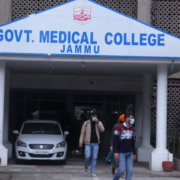Renowned Orthodontist Dr US Krishna Nayak passes away at 63

Mangaluru: In an unfortunate
incident, Dr U.S Krishna Nayak, the principal of A.B. Shetty Memorial Institute of
Dental Sciences (ABSMIDS), passed away at the age of 63 due to complications from pneumonia at a private hospital in Attavar, Mangaluru.
He is survived by his wife Shaila, son Arjun, daughter Ektha, and younger brother U.S. Deepak Nayak, reports The Hindu. He was the Dean (Academics) of A. B. Shetty Memorial Institute of Dental Sciences, Past President of IOS, and a recipient of the IOS Lifetime Achievement Award in 2024.
Dr Nayak did his graduation
(1982) and post-graduation (1985) in Dentistry from KMC College of Dental Surgery, Manipal.
Talking about the doctor,
Manipal Institute stated, “Very few people have defied age and achieved high
ranks in their academic and social life at an early age. It is not easy to
become a celebrity among the dental fraternity at a young age and become the
Dean (Academics) of a reputed Dental College at the same time!”
In a remarkable career
spanning over three decades, Dr U. S. Krishna Nayak has emerged as a beacon of
excellence in the field of dentistry and community service. Dr. Nayak’s
accolades began with the Best Local Branch Secretary Award from the Indian
Dental Association (IDA) at both the state and national levels in the late
1980s. In 1992, he was honoured with the Outstanding Young Person Award by the
Indian Junior Chambers, acknowledging his potential and contributions at a
young age.
His journey further
accelerated with the Best Citizens of India Award in 1999, followed by the National
Pride of the Millennium Award in 2000. Dr. Nayak’s expertise was recognized
nationally when he received the Indian Dentist of the Year Award in 2002, along
with the Rajiv Gandhi Award for Human Excellence that same year, highlighting
his humanitarian efforts.
The years 2003 to 2006
were particularly fruitful for Dr Nayak, as he received the Best Editor Award
at the national level from the Dental Association for three consecutive years.
His editorial contributions have significantly influenced dental literature in
India. Dr Nayak’s contributions
to the community and profession continued to shine through with the Kuvempu
Vishwamana Prashashthi and the Jewel of India Award, both awarded in 2005, and
the Bharatiya Chikitsak Ratna Award in 2004. His achievements culminated in the
esteemed Karnataka State Rajyothsava Award in 2003.
An outstanding alumnus of
St. Aloysius College, Dr Nayak received the Outstanding Alumni Award in 1994,
further solidifying his legacy in education and mentorship. His leadership
skills were evident early in his career, as he won the Best Local Branch
President Award from the IDA at the state level in 1989-90.
Dr Puneet Batra, President,
Indian Orthodontic Society (IOS) also extended his condolences stating, “His
untimely passing leaves an irreplaceable void within our community. Prof Nayak
was not only a pioneer in the field of orthodontics but also an inspiring
mentor who dedicated his life to the education and upliftment of countless
practitioners and students. His contributions to orthodontic research and
practice have significantly advanced our field and will be remembered for
generations to come. As we mourn this immense loss, we extend our deepest
condolences to his family, friends, colleagues, students and all IOS members
whose lives he touched.”
The medical community is
mourning the sudden death of the doctor stating, “In Memory of Dr. U.S. Krishna
Nayak We deeply mourn the loss of Dr. U.S. Krishna Nayak, a pioneer in
dentistry and orthodontics, who dedicated his life to revolutionizing dental
education and care in India. Rest in Peace.”
Powered by WPeMatico























